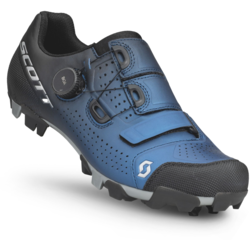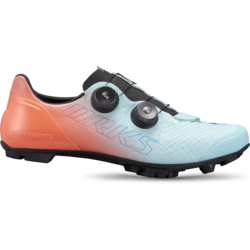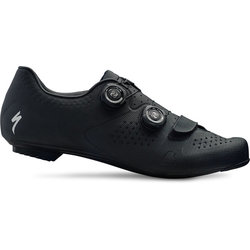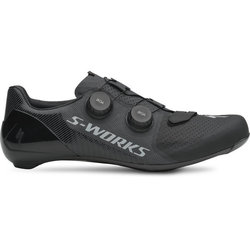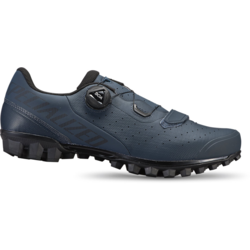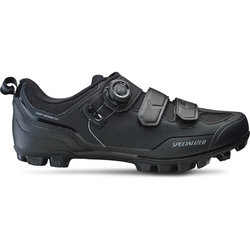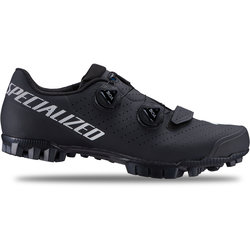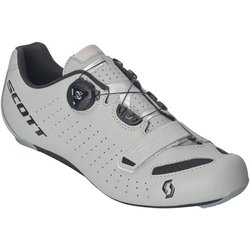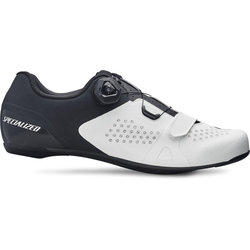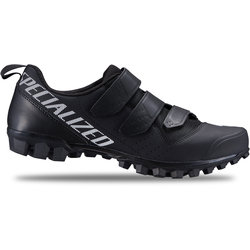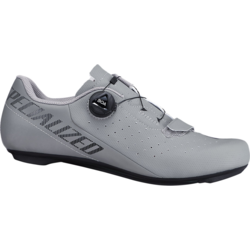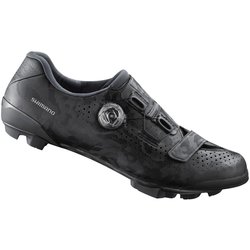Bike Fitting
Improve Your Comfort & Performance
At Revolution Bike and Bean studio, time is precious to both the client and the fitter. That is why all bike fits are pre-scheduled and not conducted on a walk-in basis. The establishment of a specific time means that all parties can agree on a time to do the fit with no outside interruptions.
The average bike fit will take 2-2.5 hours or maybe longer when dealing with triathlon bikes, custom bike fits or those clients who have physical opportunities that need extra attention. Depending on the amount of fits, the wait can be anywhere from a 1-2 weeks.
To make a bike fitting appointment, contact Don Galligher at (812) 336-0241.
The Fitting
Introduction – This is the initial contact between the client and fitter where they get to know each other a little bit better before they get into the finer aspects of the fit process. This helps to ease the tension or anxiety that the client might feel about going into the fit. It also helps the fitter understand the client a bit better about how they can best approach and explain the fit so the client will get the best results.The Exhaustive Interview – After getting to know each other a bit better, the interview allows the fitter to delve into the past, present and find the future riding plans of the cyclist. We need to know what types of injuries the cyclist has had not only recently but also over the course of their life. We ask specific questions dealing with each part of the body and how it relates to their cycling experience. We are interested in their occupation and its relationship to daily activities. Does the client stretch on a daily basis or see a specialist of any sort on a routine basis. In essence we want to know your basic physical background to understand better what we are going to see on the bike and how to interpret the results.
The Physical Assessment – Once the interview is complete we move on to a physical assessment of your body. Once again, this information is crucial if we are to understand what we are looking at on the bike. As a professional fit team, we want to know as much as we can about your body so that when you get on your bike we know up front what we can potentially encounter. In this phase of the fit we take basic measurements including your inseam, shoulder width, and foot measurements. Next we examine foot structure, knee and leg structure, examine the upper body for any further limiters and look at other range of motion indicators.
The next phase of the assessment focuses on the lower body where we measure range of motion in the glut and hamstring muscles, check for leg length discrepancies and relative tension in other crucial muscle groups. At this point we formulate decisions about whether footbeds and shoe shims might be needed but no decision is made on these issues until examined while riding your bike. As you can see, the physical assessment is essential in the information gathering process. Without the assessment, the remainder of the fit would be like driving in the dark with no headlights.
The Bike Fit – Now that we are armed with a better idea of the cyclist’s riding history and physical assessment, it is time to get the client on their bicycle to do their existing fit or on the Serotta Size Cycle to perform the custom fit. The bike fit is split in two phases. First we look at what happens from the foot to the pelvis, and then we examine what happens from the pelvis up. In the first segment we examine cleat position, saddle height and saddle fore/aft position.
The client is also informed of proper ankling and how it relates to power output. Further, the cyclist is informed of how muscles operate on the bike in order for them to create power. After the lower torso is fit, then the upper torso is examined. Perfect Fit stresses that the form and function of the upper torso is just as important as what happens with the legs. Poor technique in the upper torso leads to more maladies for cyclists than the legs and as such deserves much attention. The bike fit is not only a hands on analysis of what the cyclist should be doing, but an education process of what the body is going thru and to make it work more efficiently. Comfort of the cyclist is crucial at this stage of the process. The more comfortable the cyclist, the longer they can ride in more comfort. The by-product of all this is more power and faster speeds. Thus feedback is needed from the client on a continuous basis to ensure they feel confident about the changes being made.
In particular bike fits, Perfect Fit will implement 3D motion capture featuring the Specialized dynamic motion capture system to analyze the bike fit in actual practice. This allows the fit specialist to see what is happening while the cyclist is pedaling as opposed to sitting still. The dynamics of the pedal stroke can change enough that the fit specialist might modify the riders position on the bike to make them that much more comfy or powerful. The motion capture option is an upgrade but one that is well worth the investment.
Rider/Fitter Agreement – Many clients ask when the fit is over. The answer is quite simple. The fit is over when both the cyclist and the fit specialist reach agreement on the process that has taken place. If the client has issues they are not comfortable with, then they need to be addressed. The fitter may also want to explore further options in order to do the best fit possible. When both have reach agreement, then it is time to move on. The fit specialist will then record the fit data and answer any further questions the client might
have.
Follow Up – As a professional fit team we know that what happens in the fit studio is not the end of the fit process. Perfect Fit will leave the fit process open for 2-3 months after the fit to allow for adaptation to the new position. If the client is not comfortable on his bike or develops issues that need to be addresses, then a phone call to Perfect Fit is in order to get the client back into the studio and fix the problem. There is no further charge for these
follow-up visits.
The Importance of a Professional Bike Fitting
The Goal: To improve your cycling experience by allowing you to ride faster and longer with greater comfort while at the same time preventing injury.
Pain is Not Acceptable: Many people spend thousands of dollars on the coolest bicycles, but they don’t get the best use out of their bike or their bodies. An improperly fitted bike can limit the best intentions and ruin a wonderful past time. Having been a cyclist for over thirty years and a professional bike fitter for the past five years, it was not until I learned how to fit bikes that I truly learned how the body should interface with the bike. Too many cyclists suffer from a multitude of issues such as numb or sore genital areas and hands, numbness or tingling in the feet, sore upper- trapezoidal muscles, persistent neck pain, low back pain or pain in glut muscles and knees. Cycling is not meant to be a painful exercise and all of the above maladies can be prevented. Pain should NOT be associated with pedaling a bike. The only pain experienced should be from the exertion that you are putting into the effort and not from the bike/rider marriage. If something is causing you discomfort, then it is time to raise the red flag and seek professional help. The longer the pain persists, the more likely you are to cause long-lasting or permanent damage. The bottom line is that everyone can be comfortable on their bike and produce more power at the same time.
Who Benefits From a Professional Fit? Everyone benefits from having a quality bike fit. The casual rider, the enthusiast, the road or mountain bike racer and the triathlete all benefit from a top shelf bike fit. Whether you are a brand new rider or the seasoned old sea-biscuit that everyone wants to emulate, a fit will yield tremendous results. The new rider is very easy to fit. They have no preconceived notions of how they are to ride their bike and are very easy to teach and mold. The seasoned cyclist is like the faithful ole dog, sometimes very set in their ways and difficult to break of their old habits. Those that do break the mold are enabled with a revitalization of how it feels to really pedal their bike. Remember, everyone benefits from a quality bike fit.
The Process: Every quality procedure must have some kind of structured process and bike fitting is no different. Certain steps need to be followed in order to ensure completeness and accuracy. While enjoying a bike fit with the instructors from Perfect Fit, you can rest assured that they have been trained in the latest methods from Serotta and the Specialized BG FIT schools. The methods of training our fitters and their level of competence is what sets us apart from the fitter that does it by ‘the seat of their pants’ just because they have been cycling for a long time. Training and schooling matters. We are trained to look at your body and its marriage with the bicycle just as a doctor would look at his patient. A fitter with little practical training and experience can not only be dangerous, but can also lead to increased rider discomfort and injury. I found it very interesting that in a recent survey of bike shops in the USA that only a small percentage had a professional bike fitting service staffed by trained and schooled bike fit professionals.
As you can see from the above process, Perfect Fit is thorough in all aspects of the bike fit. Our goal is very simple: to give you the best bike fit possible so that you love riding your bike. If we cannot do that for you, then you deserve a full refund of your fit.
Bike Fit Options
Whether you’re on a brand new bike or you’re looking to shave seconds off of your next race time, you can benefit from a professional bike fit. Learn more about our fit services and schedule your appointment today.
3D Dynamic Bicycle Fit for a Road or Mountain Bike
Total time: 2-3 hours
Includes: Social assessment to attain riding style, goals, identify injuries, pain, complaints, and reason for riding. Physical assessment to determine, body structure, flexibility, range of motion body measurements and physical limiters.
Also includes foot measurements, and sit bone/pelvic measurements to determine correct footwear, cycling specific foot beds and saddle choice.
Dynamic bike fit to address all concerns, positional issues, and interface with the equipment. Includes fore-aft saddle adjustment, saddle height adjustment, cleat adjustment lateral and fore aft, Handlebar width, and angle, lever position, stem length and rise, and handlebar drop.
This will include educational piece on posture, technique, and flexibility.
3D Dynamic Bicycle Fit for a Multi-sport or Time trial bike
Total time: 3-3.5 hours
Includes: Social assessment to attain riding style, goals, identify injuries, pain, complaints, and reason for riding. Physical assessment to determine, bone structure, flexibility, range of motion body measurements and physical limiters.
Also includes foot measurements, and sit bone/pelvic measurements to determine correct footwear, cycling specific foot beds and saddle choice.
Dynamic bike fit to address all concerns, positional issues, and interface with the equipment. Includes fore-aft saddle adjustment, saddle height adjustment, cleat adjustment lateral and fore-aft, Handlebar width, and angle, lever position, stem length and rise, and handlebar drop, aero bar set up, and arm rest position.
This will include educational piece on posture, technique, frontal area and flexibility.
Contact us to schedule your bike fit today.
If the Shoe Fits
For maximum power transfer on the road or trail and for exceptional comfort on a spin bike, we recommend clipless cycling shoes and pedals. With stiffer soles and the ability to click into and out of your pedal system easily, cycling shoes make your ride and your workout more efficient, more effective, and more comfortable. Never get stuck in a toe cage again!

